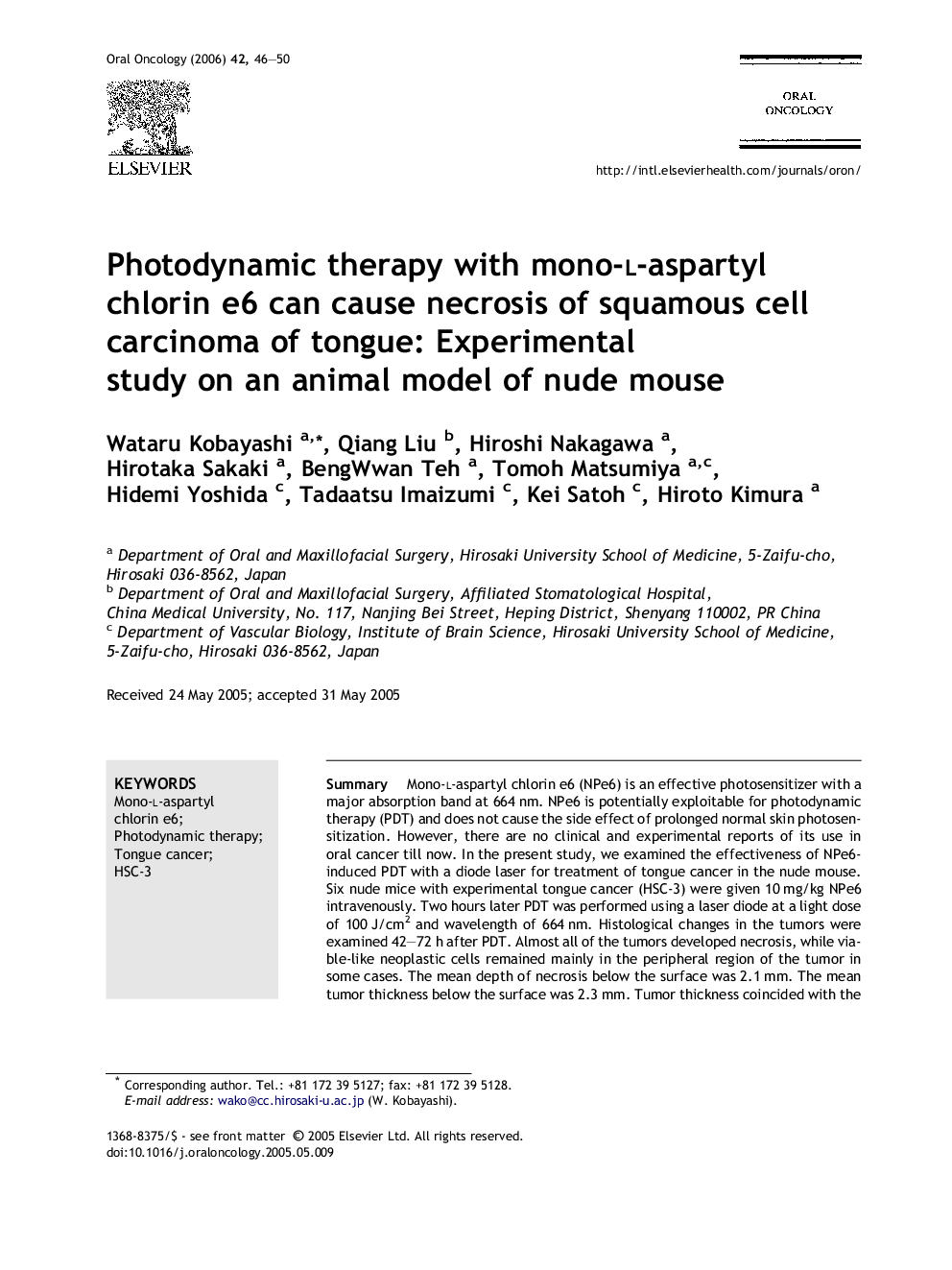| Article ID | Journal | Published Year | Pages | File Type |
|---|---|---|---|---|
| 3166060 | Oral Oncology | 2006 | 5 Pages |
SummaryMono-l-aspartyl chlorin e6 (NPe6) is an effective photosensitizer with a major absorption band at 664 nm. NPe6 is potentially exploitable for photodynamic therapy (PDT) and does not cause the side effect of prolonged normal skin photosensitization. However, there are no clinical and experimental reports of its use in oral cancer till now. In the present study, we examined the effectiveness of NPe6-induced PDT with a diode laser for treatment of tongue cancer in the nude mouse. Six nude mice with experimental tongue cancer (HSC-3) were given 10 mg/kg NPe6 intravenously. Two hours later PDT was performed using a laser diode at a light dose of 100 J/cm2 and wavelength of 664 nm. Histological changes in the tumors were examined 42–72 h after PDT. Almost all of the tumors developed necrosis, while viable-like neoplastic cells remained mainly in the peripheral region of the tumor in some cases. The mean depth of necrosis below the surface was 2.1 mm. The mean tumor thickness below the surface was 2.3 mm. Tumor thickness coincided with the depth of necrosis. NPe6-induced PDT exhibited tumor selectivity and can effectively cause necrosis of tongue cancers. This therapy could be suggested for treatment of other superficial oral cancer.
